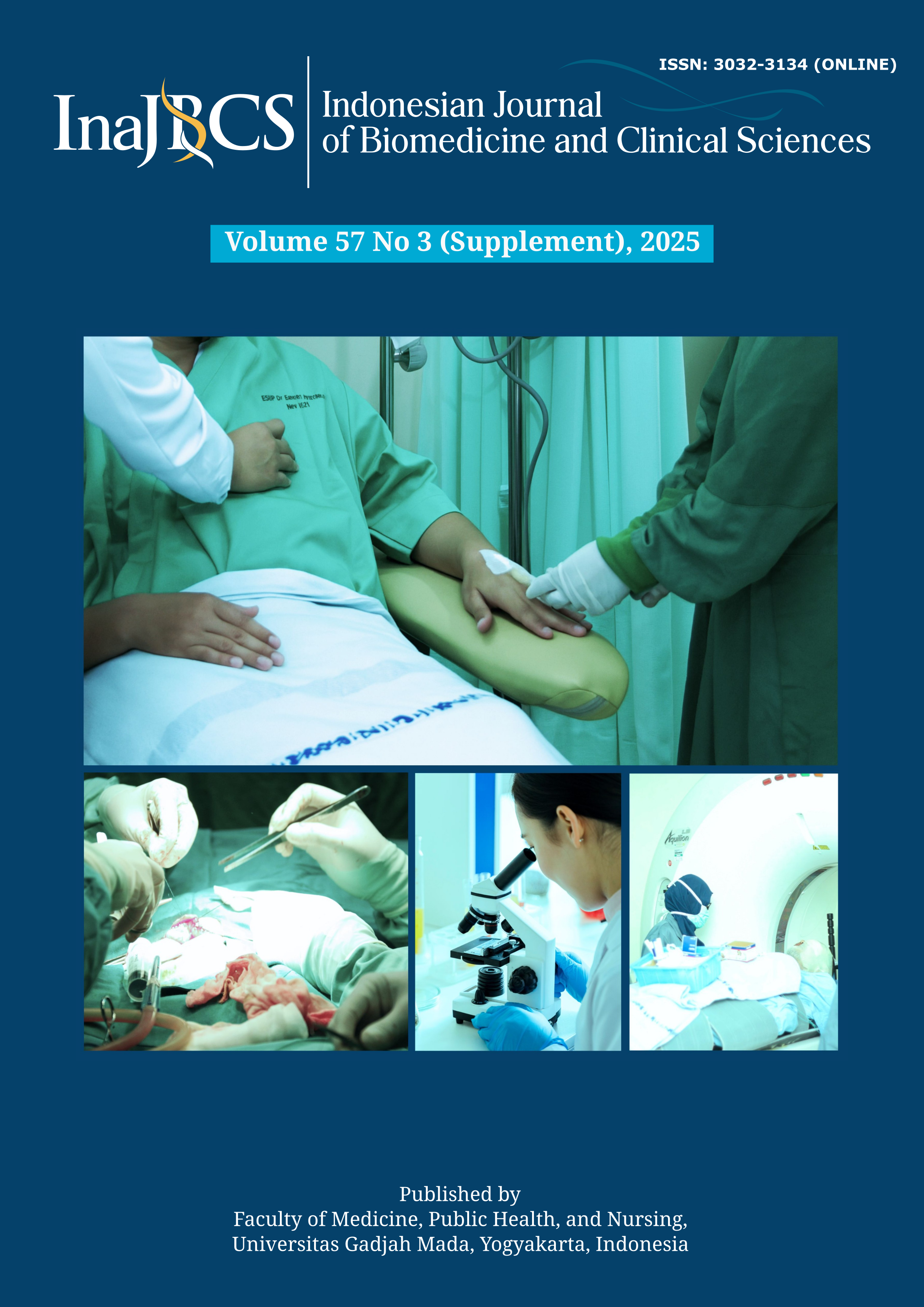Immunohistochemical profile of breast cancer patients with malignant pleural effusion diagnosed at Dr. Ario Wirawan Pulmonary Hospital, January–June 2025
Abstract
Despite advances in molecular profiling and targeted therapies, metastatic breast cancer, particularly cases with malignant pleural effusion (MPE), remains a major clinical challenge. Immunohistochemical markers such as ER, PR, HER2, and Ki-67 are essential for characterizing tumor biology, guiding treatment, and predicting
outcomes. Luminal A tumors exhibit strong ER/PR expression with low proliferation (Ki-67), while Luminal B tumors show ER/PR positivity with high Ki-67 and/or HER2 overexpression. High Ki-67 indicates aggressive tumor behavior and correlates with early recurrence and metastasis, including to visceral sites such as pleura and lungs. However, the contribution of these markers to pleural metastasis is poorly studied. This study aimed to describe the immunohistochemical profiles of breast cancer patients with MPE at Dr. Ario Wirawan Pulmonary Hospital from January to June 2025, focusing on ER, PR, HER2, and Ki-67 expression. This descriptive crosssectional study included 15 patients, with data obtained from histopathology and IHC reports. ER positivity was found in 80.0% of cases, PR in 73.3%, HER2 (2+/3+) in 66.7%, and high Ki-67 (>15%) in 93.3%. HER2 overexpression (3+) occurred in 26.7%, while 40.0% showed equivocal (2+) scores. The high prevalence of Ki-67
positivity suggests a strong proliferative index among tumors in this cohort. These findings emphasize Ki-67’s potential role in pleural metastasis of breast cancer. Most tumors demonstrated high Ki-67 expression, supporting its association with aggressive behavior and early visceral spread. This aligns with previous studies
linking elevated Ki-67 to higher histological grade and greater risk of recurrence and metastasis. Nevertheless, the role of this marker in MPE remains underreported and requires further investigation. Luminal B subtype and high Ki-67 were common, indicating Ki-67 may serve as a marker for pleural metastasis in breast cancer.






